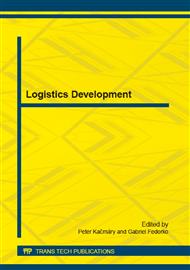p.53
p.59
p.65
p.70
p.76
p.82
p.87
p.93
p.99
Planning as a Part of Distribution Policy in Chosen Company
Abstract:
Planning presents base of all other managerial function of the company and it runs at all levels. In case company wants to be competitive, it must plan all its activities, while one of the most important plans in industrial company presents plan of production. Exactly from it all other activities are developed. Contribution is orientated to the processes that directly depend on planning of production, mainly from acceptance of order, stocks ́ analysis, determination of goals, production process to quality control. Its goal is to suggest increasing of effectiveness in process of production planning with orientation to concrete project in chosen company that would bring also costs saving.
Info:
Periodical:
Pages:
76-81
Citation:
Online since:
December 2014
Authors:
Keywords:
Price:
Сopyright:
© 2015 Trans Tech Publications Ltd. All Rights Reserved
Share:
Citation:


